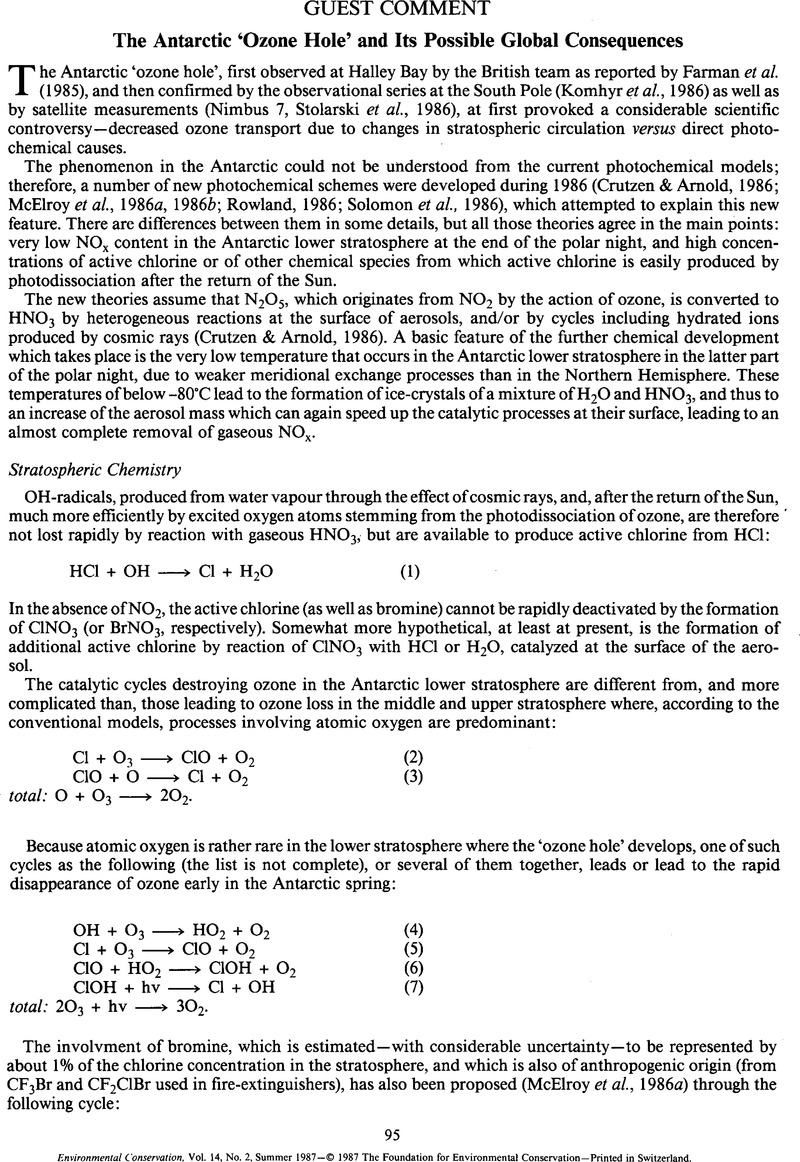Crossref Citations
This article has been cited by the following publications. This list is generated based on data provided by Crossref.
Rowland, F. Sherwood
1988.
Chlorofluorocarbons, Stratospheric Ozone, and the Antarctic ‘Ozone Hole’.
Environmental Conservation,
Vol. 15,
Issue. 2,
p.
101.
Polunin, Nicholas
and
Grinevald, Jacques
1988.
Vernadsky and Biospheral Ecology.
Environmental Conservation,
Vol. 15,
Issue. 2,
p.
117.



